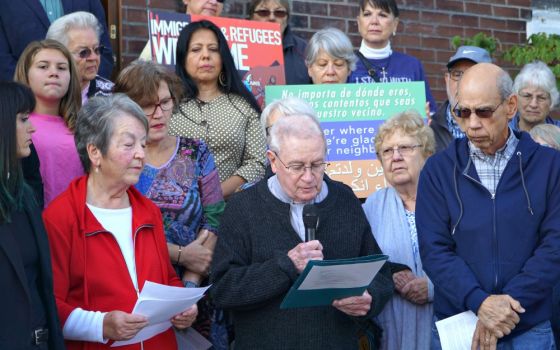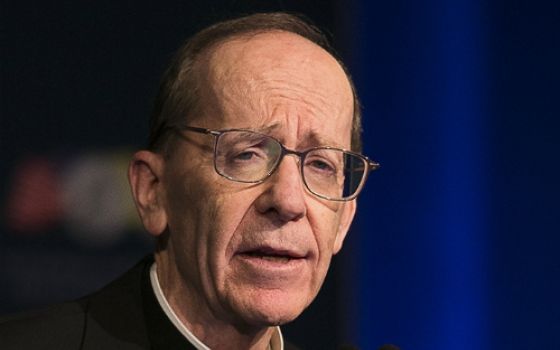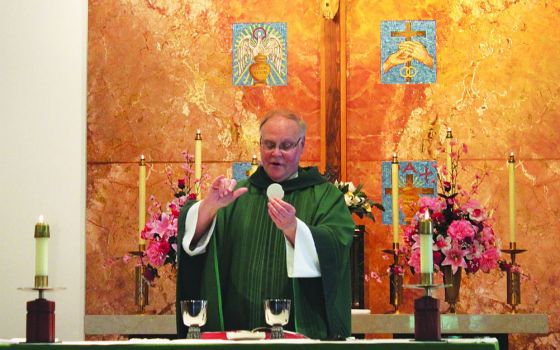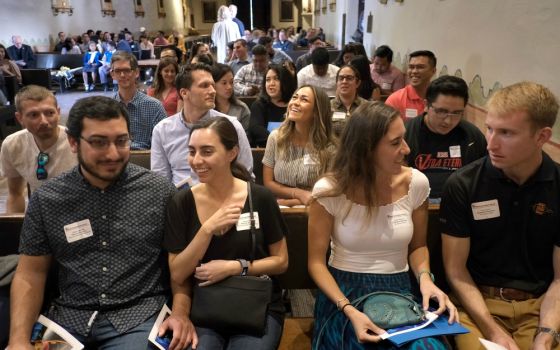Fr. Ken Whittington has been pastor of St. Charles Borromeo Church in Morganton, N.C., for more than 25 years, well beyond the usual tenure for a pastor in the Charlotte diocese.
He attributes that longevity to his ability to celebrate Mass in Hmong, a difficult-to-learn Asian language. It's a rare gift, peculiarly suited to Morganton, which has been a Hmong center since the Vietnam War concluded.
Perhaps best known to many Americans as the tragic, scorned neighbors in Clint Eastwood's gritty Detroit-based 2008 film "Gran Torino," the Hmong have a long history. Originally from China, they settled in what is now Laos. Anthropologists have studied the group as an example of a diaspora tribe, living as a minority in foreign lands, while clinging to ancient ways.
During the Vietnam War, they were known as aggressive fighters for the American side, hoping to win autonomy. It didn't work out. An estimated 10,000 Hmong soldiers were killed in a secret war orchestrated by the CIA in Laos against the North Vietnamese. For their efforts, they were punished with mass deportations and imprisonment by the Communist victors. After time spent in a Thailand refugee camp, many were eventually permanently resettled in pockets in North Carolina, Minnesota, Wisconsin and southern California, an estimated 300,000 scattered across the U.S.
They have become a part of the permanent life at St. Charles, and were later joined by Guatemalan Mayans who also settled in Morganton. "This parish is successful in integration because everyone has to share everything," said Whittington, about the church's effort to incorporate three diverse ethnic groups among its 600 families.
Leadership of the ministry to the Hmong has largely fallen to Deacon Pe Lis, who came to North Carolina in 1992. He began his church ministry work as a catechist in a Thailand refugee camp.
Lis sees his work as integrating Hmong ways with Catholic tradition. "I am a teacher," he said about his role with the community. "I have to clarify for their understanding."
Cultural understandings prevail among the Hmong. For example, the animist tradition of the Hmong often includes the construction of home shrines to ward off evil spirits. Animals, such as chickens, are ritually sacrificed to honor these spirits.
Lis encourages shrines with crucifixes and other Christian artifacts, and discourages animal sacrifice.
Another Hmong tradition involves marriage rituals. Among the Hmong, the focus is on the joining of two families together. Often there will be a Hmong wedding service focused on that understanding, with a Catholic church wedding celebrating the relationship of the couple.
Catholic practice after Vatican II has been more open to incorporating cultural traditions. While evangelical churches have made inroads among the Hmong, the Catholic openness to Hmong tradition has kept a unified community together in Morganton, said Lis.
There now are second- and third-generation Hmong people in the town of 17,000, located in the Appalachian foothills between Charlotte and Asheville. Despite signs of assimilation, such as occasional intermarriage with the locals, the Hmong hold strongly to their culture and traditions, with an American flavor.
"We now have Hmong with southern accents," said Whittington.
[Peter Feuerherd is a correspondent for NCR's Field Hospital series on parish life and a professor of journalism at St. John's University, New York.]
We can send you an email alert every time The Field Hospital is posted. Go to this page and follow directions: Email alert sign-up.




